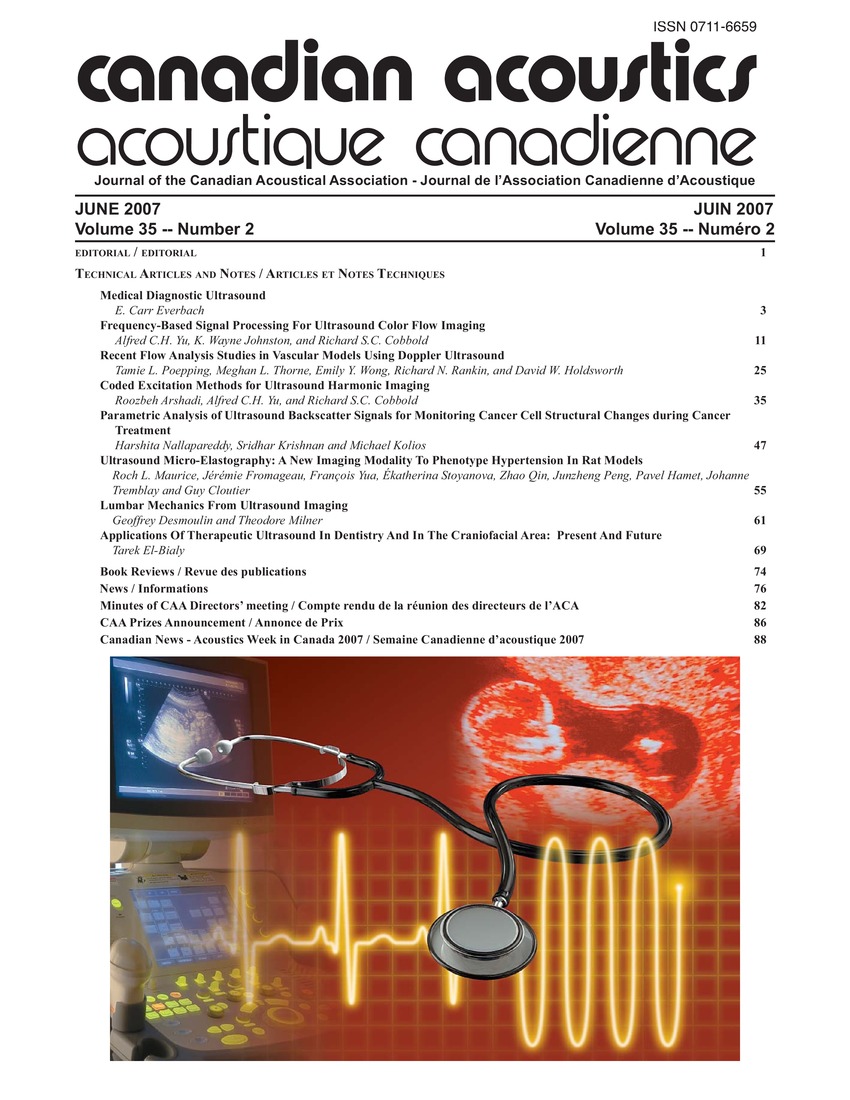Frequency-based signal processing for ultrasound color flow imaging
Keywords:
Clutter (information theory), Flow visualization, Polynomials, Problem solving, Regression analysis, Ultrasonic imaging, Acquired signals, Color flow imaging, Flow estimates, Ultrasound literatureAbstract
In ultrasound color flow imaging, the computation of flow estimates is well-recognized as a challenging problem from a signal processing perspective. The flow visualization performance of this imaging tool is often affected by error sources such as the lack of abundant signal samples available for processing, the presence of wideband clutter in the acquired signals, and the flow signal distortions that may arise during clutter suppression. In this article, we review existing frequency-based signal processing approaches reported in the ultrasound literature and evaluate their theoretical advantages as well as limitations. In particular, four major classes of clutter filter designs are considered: FIR/IIR filtering, polynomial regression, clutter-downmixing, and eigen-regression. Also, three types of frequency estimators are discussed: lag-one autocorrelation, autoregressive modeling, and MUSIC. In examining these approaches, it was concluded that eigen-based methods like the eigen-regression filter and the MUSIC estimator can better adapt to the Doppler signal characteristics, and thus they seem to have more potential for obtaining flow estimates that are less affected by the signal processing error sources.Additional Files
Published
How to Cite
Issue
Section
License
Author Licensing Addendum
This Licensing Addendum ("Addendum") is entered into between the undersigned Author(s) and Canadian Acoustics journal published by the Canadian Acoustical Association (hereinafter referred to as the "Publisher"). The Author(s) and the Publisher agree as follows:
-
Retained Rights: The Author(s) retain(s) the following rights:
- The right to reproduce, distribute, and publicly display the Work on the Author's personal website or the website of the Author's institution.
- The right to use the Work in the Author's teaching activities and presentations.
- The right to include the Work in a compilation for the Author's personal use, not for sale.
-
Grant of License: The Author(s) grant(s) to the Publisher a worldwide exclusive license to publish, reproduce, distribute, and display the Work in Canadian Acoustics and any other formats and media deemed appropriate by the Publisher.
-
Attribution: The Publisher agrees to include proper attribution to the Author(s) in all publications and reproductions of the Work.
-
No Conflict: This Addendum is intended to be in harmony with, and not in conflict with, the terms and conditions of the original agreement entered into between the Author(s) and the Publisher.
-
Copyright Clause: Copyright on articles is held by the Author(s). The corresponding Author has the right to grant on behalf of all Authors and does grant on behalf of all Authors, a worldwide exclusive license to the Publisher and its licensees in perpetuity, in all forms, formats, and media (whether known now or created in the future), including but not limited to the rights to publish, reproduce, distribute, display, store, translate, create adaptations, reprints, include within collections, and create summaries, extracts, and/or abstracts of the Contribution.


